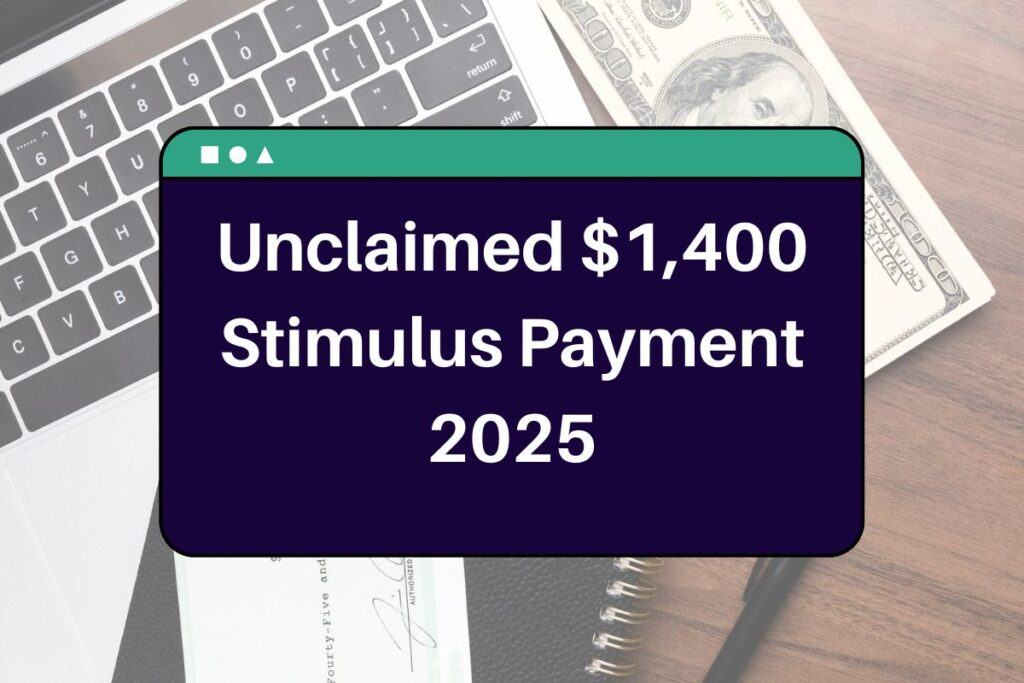The IRS will share automatic payments later this month to qualified taxpayers who failed to claim RRC on their 2021 tax returns as part of its continued efforts to assist taxpayers. After analyzing internal data indicating that a large number of eligible taxpayers submitted a return but failed to claim the credit, the IRS announced this exceptional step. The unclaimed $1,400 stimulus payment for 2025 will be revised, and individuals who did not get one or more EIPs will receive a refundable credit RRC.
What was RRC and why is it still important post-COVID-19 pandemic?
- In 2020 and early 2021, the Recovery Rebate Credit provided qualified residents with advance Economic Impact Payments under the auspices of the CARES (Coronavirus Aid, Relief, and Economic Security) Act. In the tax filing seasons of 2020 and 2021, anyone who did not get the entire amount might claim it as a refundable credit.
- Each eligible adult received $1,200 in these stimulus payments, which were determined by the adjusted gross income (AGI) of the household. Advance payments of the 2020 RRC, which was claimed on the 2020 tax returns, were made in 1st and second round of these.
- Claims might still be filed if, for whatever reason, the entire sum was not received, either because of a change in the number of dependents or because of a high income. On the tax returns for 2020 and 2021, the amount owed might be claimed as a refundable tax credit. Both Form 1040-SR and Form 1040 had an RRC section.
- It is interesting to note that this RRC would have had two effects if you had gotten it. It would have either reduced the amount of taxes due or raised the amount of the tax refund that was due. Since it is regarded as a refundable tax credit, even in the event that no taxes were due, a refund would still have been sent.
- This is perfect for people who have not received any stimulus funds or EIPs (Economic Impact funds). Since December 2024, IRS has begun paying eligible persons who failed to file their 2021 taxes, paid $0 on their forms without knowing they were eligible, or left the data field blank. Payments up to $1,400 must be made by April 15th, and a notice letter must be sent first.
How to claim your $1,400 payment: No extra paperwork needed
- In the process of having been received, the direct deposit has been made just as possible. The IRS will handle payments based only on information from tax returns rather than a different application form. This ensures that those who qualify receive these advantages while removing the majority of the interference. In order to take advantage of this, some low-income individuals who would not be able to submit tax returns will need to do so.
- The primary and most important feature of this computerized processing method is that, once a person qualifies for payment, there is no need to submit more paperwork. Consequently, the IRS’s strategy contributes to ensuring that the money reaches the appropriate channels in an efficient and effective manner.
- This financial aid program is thought to have significant impact on American households. The families will be able to pay for necessities, settle debts, or even start an emergency fund thanks to the $1,400 payout. Many recipients may be able to use it as a chance to make ends meet and avoid long-term hardship. For taxpayers who are currently suffering or who have not received previous Economic Impact Payments, it is very helpful to utilize.

Deadline to claim IRS stimulus payment
Following a review of their 2021 tax forms, the IRS determined that around 1 million individuals qualified for the stimulus payment since the RCC field was either left blank or USD 0 was wrongly recorded. These taxpayers are now getting automatic payments by mail or direct transfer, with the maximum amount being $1,400 and the amount varying based on many criteria. The $1,400 payout might still be lost by individuals who never filed a 2021 return, though, and they must do so by April 15 in order to be eligible for the credit.
The role of the IRS
During the implementation of this program, the IRS has been careful to make sure that the public is aware of and appropriately complies with the law’s restrictions. Although officials have not yet disclosed the precise dates of the distribution’s start, the government has rigorously defined the requirements for eligibility and distribution. This methodical approach reduces the possibility of errors or fraud and helps the program design reach the intended beneficiaries.
Many resources have been made available by the IRS to assist the numerous individuals who may be uncertain about their eligibility or the application process. The Internal Revenue Service’s official website is the primary information source, including many details on qualifying requirements and program modifications. Additionally, there are always helpful tax counselors available to aid those who are worried about their rights and how to apply for them.
The present government’s continued emphasis on raising economic conditions and ensuring the survival of the local population is demonstrated by this direct deposit initiative. Many American families are found to establish sustainable financial standing over the long term through the program, even if its primary goal is to fulfill people’s immediate needs. The outcome of this effort may influence this government’s future decisions regarding economic assistance initiatives.
| Official Website | Click Here |
| Homepage | OFSSBihar.in |


